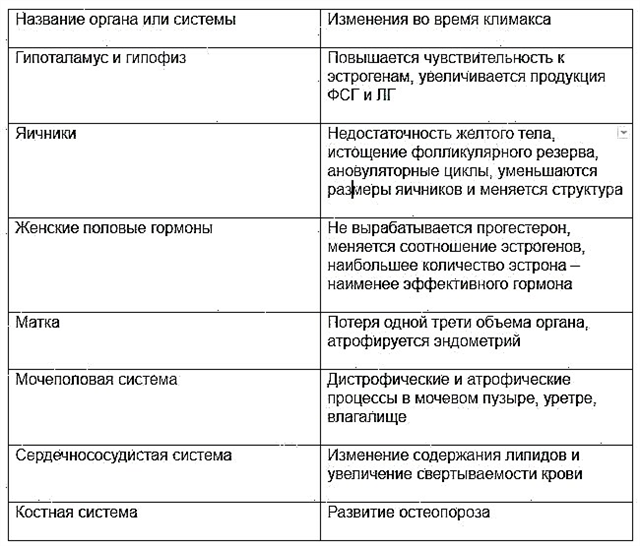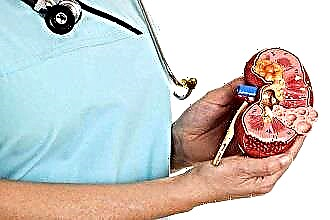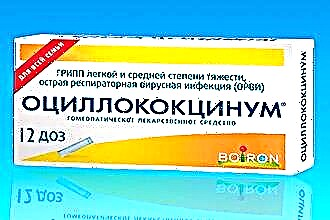The frightened parents of a two-year-old girl rushed into my office: “We know that our Dasha has an open oval window, and the ultrasound doctor said that we have an ASD! Isn't it the same thing? " Let's try to figure out what an atrial septal defect is in children, how and when it is dangerous.
What it is
The septum between the atria is a special structure. For a normal blood supply to all organs of the fetus, it is necessary that the blood in the atria mix until the very moment of birth, therefore there must be a hole in the wall between them. The formation of the interatrial septum goes through several stages:
- Initially, a primary obstruction grows from the upper wall to the atrioventricular canal, but even before it fully reaches the "end of the path", small holes open in it, which merge as they grow. The fetus reappears between the atria (secondary).
- Slightly to the right of the primary septum, along it, another one begins to grow in the embryo - a secondary one. The concave edge of this additional obstacle does not close, but leaves a hole in the center (it is precisely this that is called an oval window by experts). A thin primary partition forms its damper - a kind of valve.
- Endocardial ridges are also involved in the formation of the interatrial obstruction, which also partially create the interventricular septum, tricuspid and mitral valves.
International classification of diseases 10 revision (ICD-10) all anatomical disorders of the interatrial septum are united by a single code - Q 21.1. But clinicians distinguish three types of holes:
- Non-overgrowth of the oval window (ostium secundum) - located in the central part. Occurs when the secondary damper cannot completely cover this opening.
- Defect of the venous sinus (sinus venosus) - in the back of the septum, in the immediate vicinity of the superior and inferior vena cava. With this type of tissue defect, there are enough tissues, they are simply located "incorrectly" - so that they cannot block the communication between the atria.
- Defect on the anterior wall of the septum (ostium primum).
Normally, each of us is born with an open oval window, but in the first minutes of life, with the beginning of breathing and the inclusion of two circles of blood circulation, pressure increases in the left atrium, due to which the flap valve is tightly pressed and covers this opening.

Gradually, from three months to two years, the valve grows together with the underlying tissue, completely closing the oval window. The "accretion" can take up to five years, and sometimes the hole does not "overgrow" at all. If it is small, hemodynamic disturbances are not observed, then such a person is able to live his whole life without complaints. There are also so-called combined defects, when a defect in the wall between the atria is combined with other changes in the structure of the heart.
Small "oval windows" are referred to as small cardiac anomalies and are considered as a variant of the norm. An open oval window is one of the types of defects in the interatrial septum. But usually, using this term, doctors mean a hole in the central part of a small size and without hemodynamic disturbances. Some authors do not consider this ASD anomaly (atrial septal defect), explaining their point of view by the fact that it is not a violation of embryogenesis.

ASD in adults
A child with such a “special” heart will grow up with absolutely no health problems. Congenital atrial septal defect in adults can manifest itself as a heart rhythm disorder after various diseases. In addition, ASD often acts as a risk factor for the formation of venous thrombi, which in turn can provoke an acute coronary event (heart attack or stroke).
Pregnancy puts additional stress on all organs and systems, so if a woman has ASD, you should carefully prepare for the upcoming conception. The expectant mother with any congenital heart anomalies should be monitored jointly by a gynecologist and a cardiologist.
Why does the defect occur?
If your child is diagnosed with any intrauterine developmental anomaly, you will certainly ask the doctor a question - why did this happen to my baby? The reasons for the violation of the formation of cardiac chambers and connections in the fetus can be:
- genetic predisposition;
- intrauterine infection;
- exposure to certain medications;
- ionizing radiation;
- toxic substances entering the body of a pregnant woman with food and air;
- bad habits of parents.
Pathophysiological changes
If the hole in the wall between the atria is significant, then arterial and venous flows are mixed in them. Since the pressure in the left side of the heart is stronger, part of the blood is "dumped" through the defect into the right atrium (left-to-right shunt), "forcing" the latter to work with an excessive load. Consequently, the right ventricle also receives more blood volume and is "overloaded".
If an extensive defect is not eliminated in a timely manner, an increase in pressure in the pulmonary circulation (pulmonary hypertension), cardiac arrhythmias such as supraventricular arrhythmias, fibrillation, and atrial flutter may occur. With the aggravation of the process, the right ventricle ceases to cope with the load, the pressure in it begins to increase, as a result of which there is Eisenmenger syndrome ("Reverse discharge" of blood, from right to left).
How to identify a disease
The diagnosis "comes" to everyone in a different way. You can, while still wearing a baby under the heart, learn about the pathology he has, or the neonatologist will immediately after birth inform you about a secondary atrial septal defect in a newborn, and sometimes it happens that a teenager suddenly begins to be bothered by unpleasant sensations in the chest area, and the examination reveals DMPP.
Symptoms and Signs
I in no way call to “look for diseases” in a child. I just want to remind you that timely diagnosis and correction of violations will allow the baby to maintain health, ensure full working capacity, quality of life, and avoid disability. I advise you to contact your pediatrician if you suddenly notice the following symptoms in a child:
- excessive tiredness;
- shortness of breath after exercise;
- complaints of increased heart rate;
- pallor or cyanosis (bluish skin tone).
A preschooler is not always able to accurately describe his condition. You may find that your toddler sits down to rest more often than other children, and has more colds. And a banal viral infection in him is suddenly complicated by pneumonia. "Interruptions in the heart" with latent ASD usually appear during adolescence.
Fortunately, ASD is usually asymptomatic, the child is not worried about anything, but if doctors diagnosed an atrial septal defect, it is important to undergo preventive medical examinations so as not to miss the first clinical signs of pulmonary hypertension.
Ultrasound criteria
On auscultation, your pediatrician will most likely detect a systolic, less often diastolic murmur, split second tone. But quite often, even with large defects, in the case of ASD, it is not always possible to catch a change in the melody of the heart with the ear.
"Clinical guidelines for the management of children with congenital heart defects", approved by the Association of Cardiovascular Surgeons of Russia in 2013, distinguish echocardiography as the main and most informative imaging diagnostic method.
The diagnostic capabilities of ultrasound in the case of ASD include:
- Direct determination of the defect, its size, shape, localization. The entire atrial septum is examined in a 2D image. Some authors recommend evaluating the hole in three projections.
- Increase in the size of the right atrium and ventricle.
- With color Doppler mapping, the definition of a discharge through a blood defect from left to right, blood flow velocity.
- Revealing the paradoxical nature of the movement of the interventricular septum - is observed in the absence of pulmonary hypertension with a blood discharge from left to right. If the volume of shunted blood is small, and the pulmonary systolic pressure is high, this symptom is usually not detected (often during the neonatal period).
- Exclusion of other congenital anomalies (combined defect).
Detailed visualization of the defect and changes in hemodynamics are necessary to determine the further tactics of patient management. Sometimes your cardiologist may refer your child again for echocardiography some time after the first examination. This is necessary to clarify how the existing opening in the interatrial septum affects the functional state of the heart and the dynamics of blood circulation.
Additional diagnostic methods
Electrocardiographic examination will not give an idea of the anatomical abnormalities of the main pump of the body. The ECG will reflect the changes characterizing the hypertrophy of the right heart and rhythm disturbances:
- deviation of the electrical axis to the right;
- bundle branch block;
- abnormal axis of the P wave.
On chest x-ray, the specialist will see an increase in the right atrium and ventricle, bulging of the pulmonary artery arch, and an increase in the pulmonary pattern. Magnetic resonance imaging is sometimes required. Additional research methods help to assess how the opening in the interatrial septum affects the activity of the heart.
Treatment
Atrial septal defect in children requires a strictly individual approach in the choice of therapeutic tactics. A newborn with such a diagnosis is subject to systematic medical supervision. A hole up to 5 mm in diameter in the absence of overloading of the right heart does not need treatment. Medicines are shown:
- infants with the first signs of circulatory failure in the preoperative period;
- children with irreversible pulmonary hypertension, when "the moment has passed" for the operation.
If the hole during the first year of life has no tendency to overgrow, and the right ventricle “cannot cope” with the load, surgical correction cannot be dispensed with. There are two approaches:
- Surgical - direct suturing or patching.
- Percutaneous catheter closure - A device is inserted into the heart through one of the large arteries.

Unfortunately, not all types of ASD can be treated with minimally invasive techniques. According to the treatment protocol, the following are not subject to closure with a catheter:
- defects of the venous and coronary sinuses;
- primary ASD defects.
In the postoperative period, the child should be regularly examined by a cardiologist, daily body temperature should be measured, and contact with infection should be avoided. In case of even minor complaints, contact your doctor immediately. This will help prevent serious postoperative complications such as thrombosis and pericardial effusion.
Recovery prognosis
Usually the prognosis of this congenital anomaly is favorable. Patients with an open oval window lead an active lifestyle. If the correction of ASD of large sizes is carried out on time, the baby will not differ from healthy children. The main thing is to prevent the development of circulatory failure, when the heart cannot withstand the load during the operation, and cardiac surgeons can no longer help.
Is it possible to suspect a defect in the womb
In about 1/5 of cases of childbirth with ASD, the mother goes to the hospital, already knowing about the possible pathology in the baby. This allows parents to be psychologically prepared for the upcoming difficulties. But the quality of antenatal diagnostics largely depends on the doctor's experience, his qualifications, and the availability of modern equipment in the clinic.
The gynecologist observing you during pregnancy should be aware of all the risk factors for having a baby with intrauterine pathology. If you "in an interesting position" have had rubella, or some of your relatives have had congenital heart anomalies, you should definitely notify your doctor. You may need to undergo an additional ultrasound examination.
Adverse consequences of any congenital malformation are always associated with "lost time" - late diagnosis, failure to carry out timely surgical correction. Today, medicine allows you to preserve the life and health of a baby even with significant defects of the interatrial septum.



